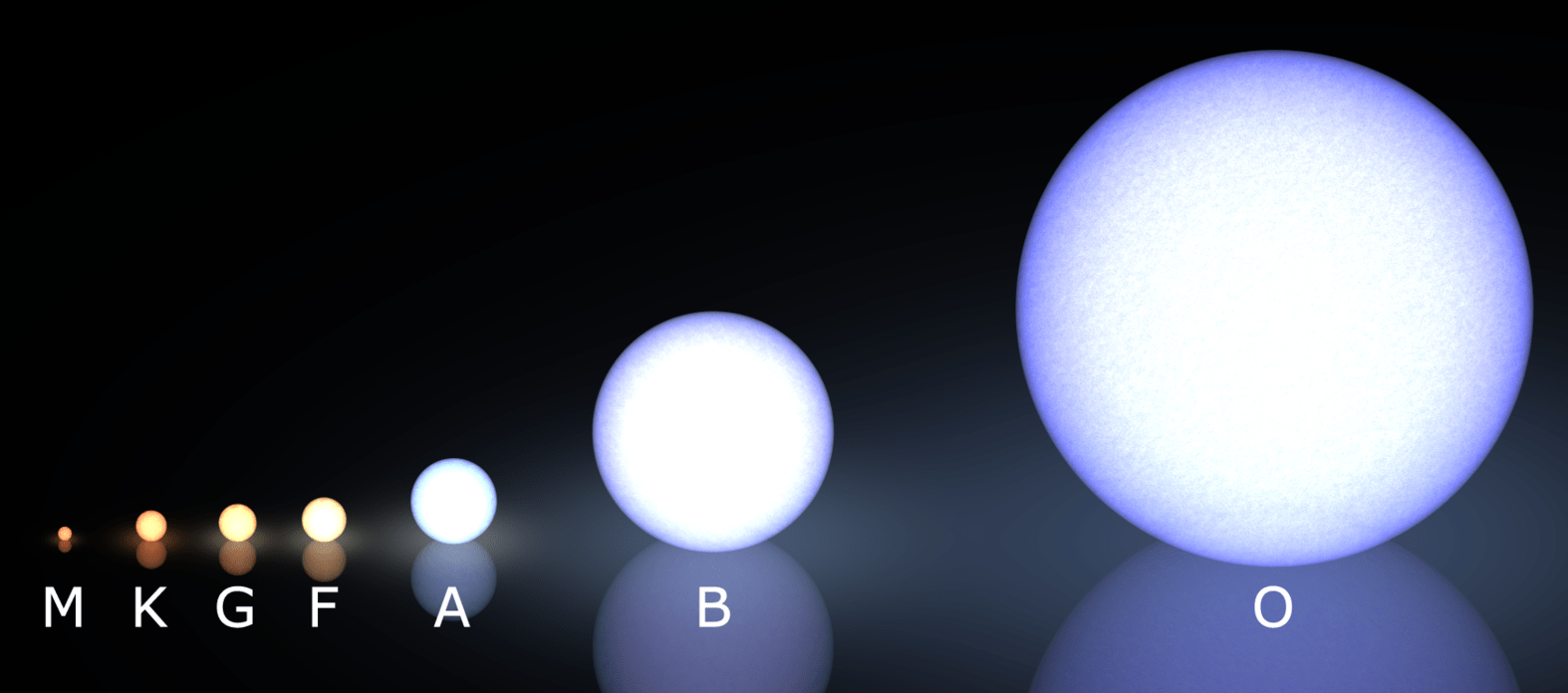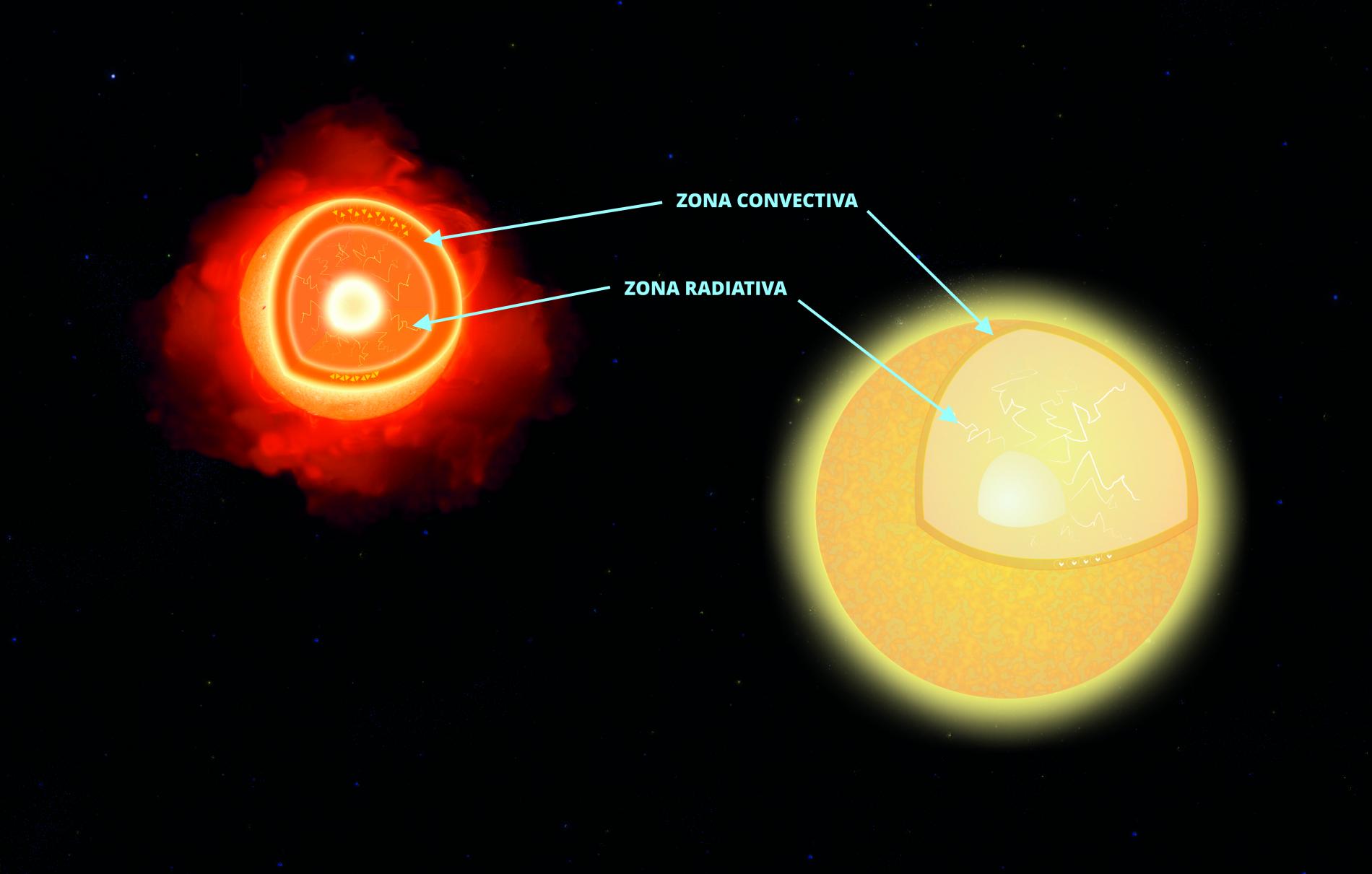Astronomers find a star that hides, among its pulsations, flares millions of times more intense than those of the Sun
Observations with the Kepler satellite allow surface activity to be found in stars where, according to theoretical models, it should not occur. In the sample highlights the star KIC 9716385, which presents, hidden between its pulsations, flares millions of times more intense than the solar ones
The stars are classified into different types according to their temperature, in a sequence –OBAFGKM– where the O corresponds to the hottest stars, with up to thirty thousand degrees, and the M to the coldest stars, whose surface does not exceed three thousand degrees; the Sun, a medium-sized type G star, maintains a temperature of about six thousand degrees. Until recently it was thought that the hottest stars had no superficial stellar activity such as the Sun, which shows spots or flares (explosive events that release, in a few minutes, the energy of millions of hydrogen bombs). Now, a group of researchers have found a type A pulsating star that presents, hidden between its pulsations, flares several million times more intense than those of the Sun.

It is believed that the solar magnetic field, responsible for the activity of our star, is produced by a mixture of factors, including the presence of what is known as the convective zone, a layer that covers the 30% outermost radius of the Sun, as well as the different rate of rotation between this region and the contiguous and more internal (the radiative region).
"Until recently it was thought that stars with a temperature above seven thousand degrees could not present surface stellar activity since their convective layers are too thin to generate sufficiently intense magnetic fields", says Eloy Rodríguez, a researcher at the Institute of Astrophysics of Andalusia (IAA-CSIC) that leads the work. However, the observations provided by the Kepler space mission (NASA) in recent years have allowed the detection of surface stellar activity in a large number of hot stars of type A, and even type B, which in principle lack a convective zone. These observations not only suggest the existence of spots on the surfaces of these types of hot stars, but flares have also been detected in some of them. "This indicates the existence of surface magnetic fields in these objects, which contradicts the theory and our current knowledge about stars with totally radiative envelopes", says Eloy Rodríguez (IAA-CSIC).

HIDDEN FLARES
The study, led by IAA-CSIC researchers, has focused on a sample of stars observed with Kepler in the star cluster NGC 6811, with high cadence observations, of one observation every minute. This has allowed to detect stellar activity in a large percentage of type A stars present in the cluster, but, in addition, it has revealed for the first time hidden flares between the pulsations of a variable star, known as KIC 9716385.
Stellar pulsations are periodic variations in the luminosity of a star, produced by pressure or gravity waves propagating inside. In the case of ID36, we are talking about a variable star of the Delta Scuti type that shows more than one hundred pulsation modes.
“Only when we extracted, from the original light curves, the brightness variations due to the pulsations, did we clearly see the flares. We detect ten fulgurations throughout the eighteen months of observation with Kepler, with an irregular distribution in time: two or three fulgurations can occur in a few days followed by long periods of inactivity, something similar to what happens in M dwarf stars, much colder objects and where stellar activity is common”, says María José López-González, a researcher at the IAA-CSIC who participates in the study.
The energy emitted during the flares of KIC 9716385 is up to several million times more intense than that of the typical solar ones, so we are talking about superfulgurations. They show the usual characteristics of these explosive events, with a rapid increase in brightness and a progressive fading: the average duration ranges from twenty to fifty minutes, but the maximum energy is reached in just five minutes.
“The case of KIC 9716385 opens the possibility of finding similar cases, that is, short-term pulsating stars with flares masked by pulsations. However, today this object is the only one found and it is possible that it remains a unique case for quite some time, taking into account the current level of photometric accuracy and the current availability of sufficiently long and high cadence observations”, concludes Eloy Rodríguez (IAA-CSIC).
E. Rodríguez et al. " Pulsation and rotation in NGC 6811: the Kepler short-cadence stars". Monthly Notices of the Royal Astronomical Society (Nov 2019). DOI: https://doi.org/10.1093/mnras/stz3143
Instituto de Astrofísica de Andalucía (IAA-CSIC)
Unidad de Divulgación y Comunicación
Silbia López de Lacalle - sll[arroba]iaa.es - 958230676
https://www.iaa.csic.es
https://divulgacion.iaa.csic.es

